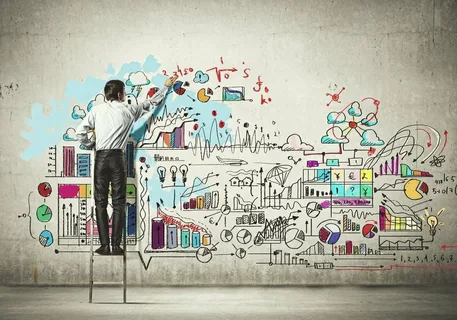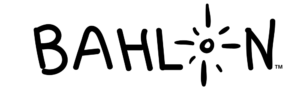Table of Contents
ToggleIntroduction
In an ever-evolving and competitive business landscape, the role of creativity has never been more critical. It acts as the lifeblood that fuels innovation, drives growth, and gives businesses a competitive edge. Yet, transforming abstract ideas into tangible impact is a complex process that requires strategic thinking, careful planning, and disciplined execution. This article explores the vital role of creativity in business growth, providing insights into how organizations can harness and cultivate it to create lasting value and impact.
Creativity in Business
Creativity in business refers to the ability to produce or use original and valuable ideas to solve problems, improve processes, or create new products and services. It is not confined to the creative arts but is an integral part of strategic decision-making, marketing, business development, and operational efficiency.

Importance of Creativity in Business Landscape
In the contemporary business landscape, creativity is not just a ‘nice-to-have’ but an essential tool for survival and growth. It fuels innovation, which is a key differentiator in today’s competitive markets. Creativity helps businesses to adapt to changes, meet customer needs in novel ways, and stay ahead of industry trends. It fosters an environment of continuous learning and improvement, propelling businesses towards sustainable success.
Creative Process
The creative process is often conceptualized as a journey from ideation to implementation. It begins with ideation, where limitless possibilities are conceived, brainstormed, and explored. Next is the incubation stage, a period of subconscious processing where ideas are allowed to mature. This stage can involve trial and error and is sometimes characterized by initial failures and frustrations. Following this is the illumination stage when the ‘aha’ moment occurs and clarity is attained. Finally, the implementation stage, where the idea is materialized into a workable solution or product. Each stage is crucial to the overall creative process, forming a cycle that drives innovation in business.
Key Components of a Creative Environment
A company’s culture, diversity, and leadership all play crucial roles in nurturing creativity. A culture that encourages risk-taking and embraces failure as part of the learning process can foster an environment ripe for creativity. Diversity, in terms of both backgrounds and perspectives, enriches the pool of ideas and enhances problem-solving capabilities. Inclusive leadership that values and solicits input from all team members can also spur creativity. A leader who models creative behavior encourages open communication, and supports idea generation can create a climate where creativity thrives. It’s the synergy of these elements that makes a truly creative environment possible.
Role of Leadership in Fostering Creativity
Leadership plays a pivotal role in fostering an environment conducive to creativity in business. Leaders are responsible for cultivating a culture that not only values creativity but actively encourages it. Their approach to failure, communication, and decision-making significantly impacts the extent to which creative thinking is embraced within their teams.
Leaders who view failures as learning opportunities and encourage open dialogue about new ideas create a safe space for creativity to flourish. They are not merely directive but also participative, engaging team members in problem-solving and decision-making processes. By modeling creative behavior and supporting idea generation, they nurture a climate of innovation. Furthermore, by recognizing and rewarding creative efforts, leaders can motivate employees to think outside the box, thereby driving business growth and differentiation.
Building a Creative Culture in the Workplace
Creating an Inclusive Environment
A diverse and inclusive environment is a fertile ground for creativity. It brings together individuals with various backgrounds, experiences, and perspectives, thereby enriching the idea pool. Diversity challenges the status quo, sparks fresh thinking, and nurtures innovation. It encourages individuals to look at problems from multiple angles and to devise novel, effective solutions. It is the collision of these different perspectives that often leads to groundbreaking ideas and approaches, thereby driving innovation and growth. When everyone feels included, they are more likely to share their ideas freely, enhancing collective creativity.
Implementing Flexible Work Structures
The flexibility of work arrangements can significantly enhance creative thinking. A rigid, 9-to-5 schedule might not necessarily be conducive to the free flow of ideas. Creative thinking often flourishes when individuals are given the freedom to work when and where they are most productive. By allowing flexible hours, remote work, or even a results-only work environment, organizations can provide the space and autonomy that creative thinking needs to thrive. This flexibility respects individual work styles and preferences, catering to early birds and night owls alike. It helps maintain work-life balance, reduce stress, and ultimately foster a more engaged, creative, and productive workforce.
Tools and Techniques for Stimulating Creativity in Business
Brainstorming Sessions
Effective brainstorming sessions are pivotal in fueling creativity and driving innovation in a business setting. They foster an environment where everyone can contribute ideas, free from judgment or criticism. The following steps guide conducting productive brainstorming sessions:
Define the Problem: Clearly articulate the issue at hand. A well-defined problem provides direction and focus for the brainstorming session.
Establish Ground Rules: These should encourage open participation, discourage criticism, and promote respect for all ideas. One common rule is that no idea is considered silly or irrelevant; the aim is to generate as many ideas as possible.
Facilitate Open Discussion: Ensure every member has an opportunity to voice their thoughts. Encourage quieter members to contribute and ensure dominant members do not overpower the conversation.
Record All Ideas: Document all suggestions without evaluation. This assists in visualizing the thought process and can aid in later review and analysis.
Prioritize and Refine Ideas: Once all ideas are on the table, the team can start grouping, prioritizing, and refining them based on their feasibility and alignment with the business objectives.
Utilizing Technology for Innovation
Emerging technologies can offer new avenues for creative problem-solving and innovation in business. Artificial Intelligence (AI), for example, can help businesses analyze complex data, identify patterns, and make predictions, opening up new possibilities for innovation. Virtual Reality (VR) and Augmented Reality (AR) can be used to create immersive experiences, transforming fields like training, product development, and customer interaction.
Blockchain technology can introduce new methods of secure transactions, enhancing trust and transparency. Additionally, collaboration and project management tools can streamline workflows, improve communication, and facilitate the sharing and development of ideas. Leveraging these technologies requires an understanding of their potential, their implementation, and the ability to adapt them to specific business needs.
Measuring the Impact of Creativity in Business
Creativity plays a pivotal role in driving business growth and development. However, quantifying its impact can be somewhat challenging. To evaluate the influence of creative initiatives on business growth, it’s essential to develop and monitor effective Key Performance Indicators (KPIs) and discern the difference between their short-term and long-term impacts.

Key Performance Indicators for Creative Initiatives
Key Performance Indicators serve as a measurable value that demonstrates the effectiveness of business operations. KPIs for creative initiatives might include metrics related to the number of new ideas generated, the implementation rate of these ideas, or the revenue growth resulting from these initiatives. Other KPIs could track the increase in market share, improvements in customer satisfaction, or reduction in operating costs. Carefully selected and accurately measured, these KPIs can provide valuable insights into how well creativity is driving business growth.
Long-term vs. Short-term Impact
The impact of creativity on business growth can manifest differently in the short term and long term. In the short term, creative initiatives may lead to immediate improvements in productivity, increases in sales, or enhancements in customer experience. However, the long-term impact of creativity is often even more significant. It can lead to sustainable growth through the development of innovative products or services, the creation of new markets, or the establishment of a strong brand identity.
FAQs
How does diversity promote creativity in business?
Diversity fosters creativity by introducing various perspectives and ideas into the business. It encourages individuals to look at problems from multiple angles and to devise novel, effective solutions, therefore driving innovation and growth.
How do flexible work structures aid in stimulating creativity?
Flexible work structures allow individuals to work when and where they are most productive. This autonomy can enhance creative thinking by respecting individual work styles and preferences, maintaining work-life balance, and reducing stress.
What role do technologies like AI and VR play in fostering creativity?
Technologies like AI and VR offer new avenues for creative problem-solving and innovation. AI can help analyze complex data, identify patterns, and make predictions. VR and AR can create immersive experiences, transforming fields like training and product development.
Conclusion
Creativity in business is an invaluable driver of business growth, fostering a dynamic environment that encourages the generation and implementation of innovative ideas. Whether it is through brainstorming sessions, leveraging technology, or cultivating a diverse and flexible work environment, creativity impacts all facets of a business. Measuring this impact, through carefully selected KPIs, can provide insights into the tangible benefits of creative initiatives, both in the short term and long-term. As a catalyst for innovation, creativity can lead to sustainable business growth, the development of new markets, and the establishment of a strong brand identity.




















